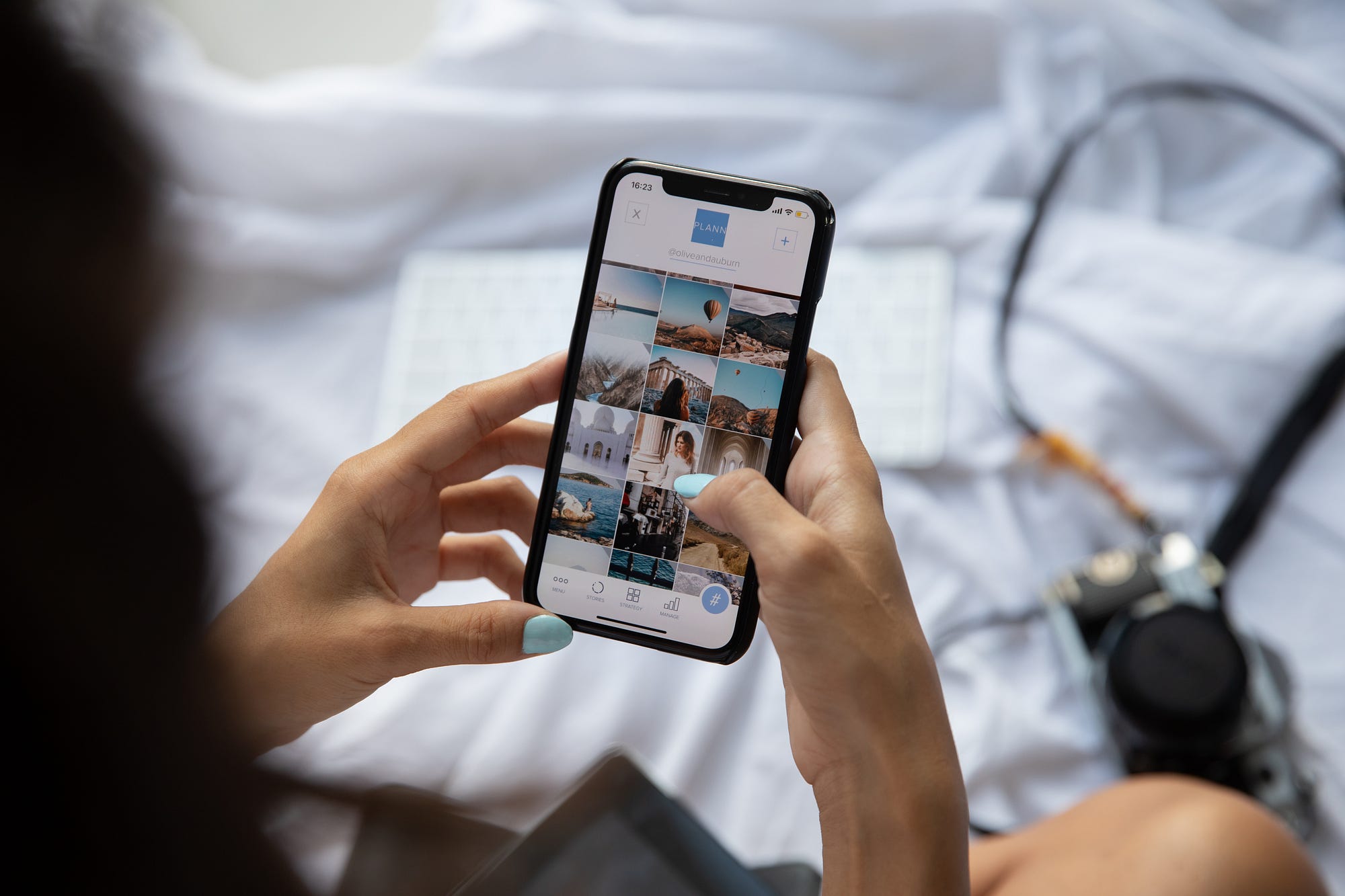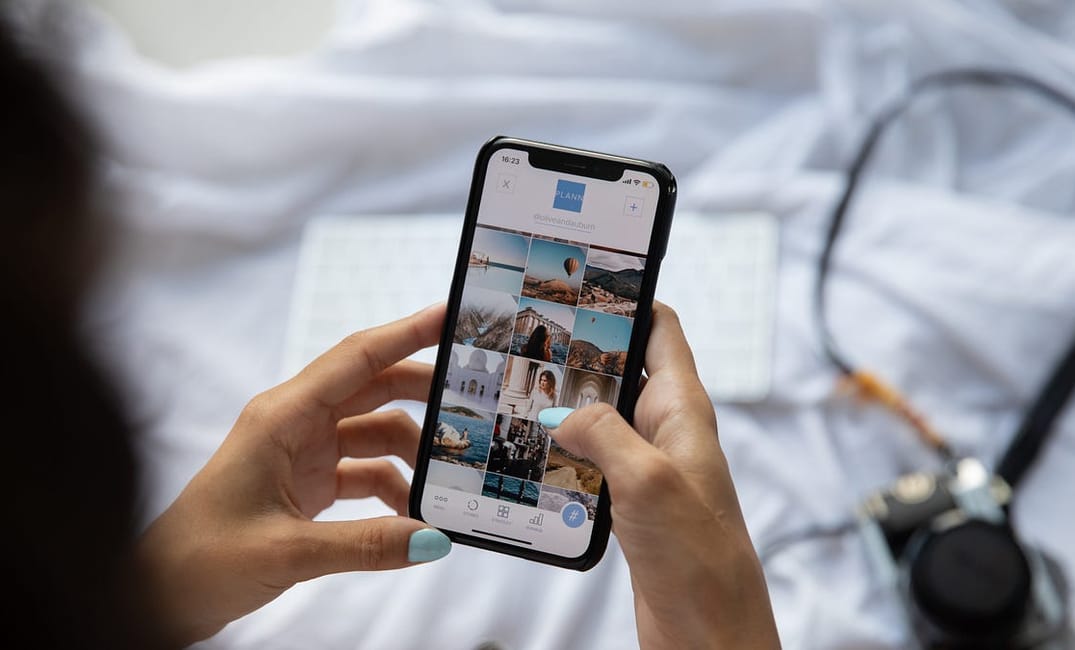
I don’t love to admit it, but there’s really no denying I was addicted to my phone up until recently. With the pandemic forcing us to do everything from home and the other wild things happening in the world, I found myself constantly glued to my device in an effort to stay connected and updated. But I realized that behind the excuse of staying informed and connected, I was avoiding the reality of my phone addiction.
As a computer science and business student looking to break into tech, it’s even harder to disconnect without feeling guilty for doing so. With all that is going on in such a fast-moving industry, it's difficult to unplug news on mergers, tech trends, new products, and other developments without feeling like you’re missing out on important information.
Earlier this week, I took two final exams. In super-responsible college student words, this means I spent all of last week cramming for these exams because I procrastinated once again (surprise!). While it was important for me to stay up-to-date on what is happening in my friend circle, tech world, and society at large, I also knew that I still had to prioritize school.
So, in order to fully concentrate on my finals, I knew that I had to do something about that small metal box that my eyes were always glued to.
Sign up for The Bold Italic newsletter to get the best of the Bay Area in your inbox every week.
What I did
Step one: Finding the source of my addiction
I threw out the parts of my phone that I was addicted to. Scrolling through my apps, I thought about which apps I used the most. My most-used were primarily social media, messaging platforms, and news sources. Not at all surprising.
Step two: Analyzing the source
Looking at the apps I used the most, I filtered them by deciding what I needed and didn’t need. For example, I still needed to check email every day in order to keep up with updates for school and other business topics. I didn’t actually need social media.
Step three: Going in for the kill
One by one, I deleted the apps that were wasting my time and pulling my thumb into scrolling endlessly on my handheld metal box.
The secret sauce
It would be too simple to just say that I deleted the apps that I was addicted to and quit all online connection cold turkey. That’s not what I did. Instead, I deleted those addicting apps off of my phone and only allowed myself to check these platforms on my laptop.
Why this worked
I didn’t limit myself at all on my laptop nor did I make any adjustment at all beyond deleting those applications on my phone. But by deleting many of my most addicting phone apps, I significantly reduced the amount of time spent mindlessly browsing online without really trying that hard.
Every time I instinctually picked up my phone to pass time, I was met with empty slots where those apps used to be and reminded of the fact that I was once again looking for a way to distract myself and waste time. If I really felt like seeing what people were doing, I would type the website name into my browser and then scroll from there. Because going online to look at social media or news platforms was not something that I had already been accustomed to, every time I did check those platforms on the web version, it was more intentional and not as a result of bad habits.
In other words, it was slightly more effort to do than what I was used to on my phone. Since we are a lazy generation (or maybe that’s just me), this works.
An alternative
Deleting addictive phone apps would be harder if I was only connected to the rest of the world through my phone for most of the day. Now that we’re working from home, I always have access to these platforms through my laptop. But I have another way that has worked for me.
Every semester during finals week in college so far, I’ve done something similar to deleting my addictive apps off of my phone. Last year when we had in-person classes, I would move my apps around on my home screen fairly often so that the apps would be harder to find. This helped me to recognize when I was clicking on certain app locations out of habit rather than when I actually wanted to visit that certain app.
For example, if I had Snapchat in a certain location on my home page for a while, I would unintentionally unlock my phone and hover to the position that Snapchat is in and just scroll through stories that I didn’t really care about to pass time. Whenever I changed up the locations on my phone, I would find myself mindlessly clicking on the location where Snapchat used to be, only to be met with the weather app.
This would happen often and helped me to notice the unhealthiness of my addiction to being artificially stimulated by certain apps. After accidentally clicking on the weather app and realizing that I didn’t actually want to go on Snapchat, I would promptly shut off my phone again and go back to whatever it was I should have been doing in real life.
Takeaways
It just so happens that during finals week, I also found myself writing a school paper on how technology is built to be addictive. While researching for that paper, I learned about how TikTok’s A.I. algorithm analyzes your preferences to feed you content you can’t walk away from, Facebook’s monetization business model and both its intended and unintended consequences, as well as how the “scroll to refresh” function creates anxiety and fuels technology addiction. As a result, I’ve realized that it is up to us as the vulnerable users of these addictive platforms to exercise control over our habits by being aware of how big tech companies use our own data to make us addicted.
I did this little experiment in order to stay focused on studying for finals, but I’m realizing now that deleting these apps impacted me more than I thought, even if it was only for a week. I now find myself intentionally checking social media platforms like Facebook and Instagram rather than checking them mindlessly whenever I have a minute of free time. As a result, I check these platforms about once or twice a day rather than every hour like I used to. Perhaps as time goes on, I’ll resort back to my old habits, but at least I know how to reset myself and curb my phone addiction when I need to.







